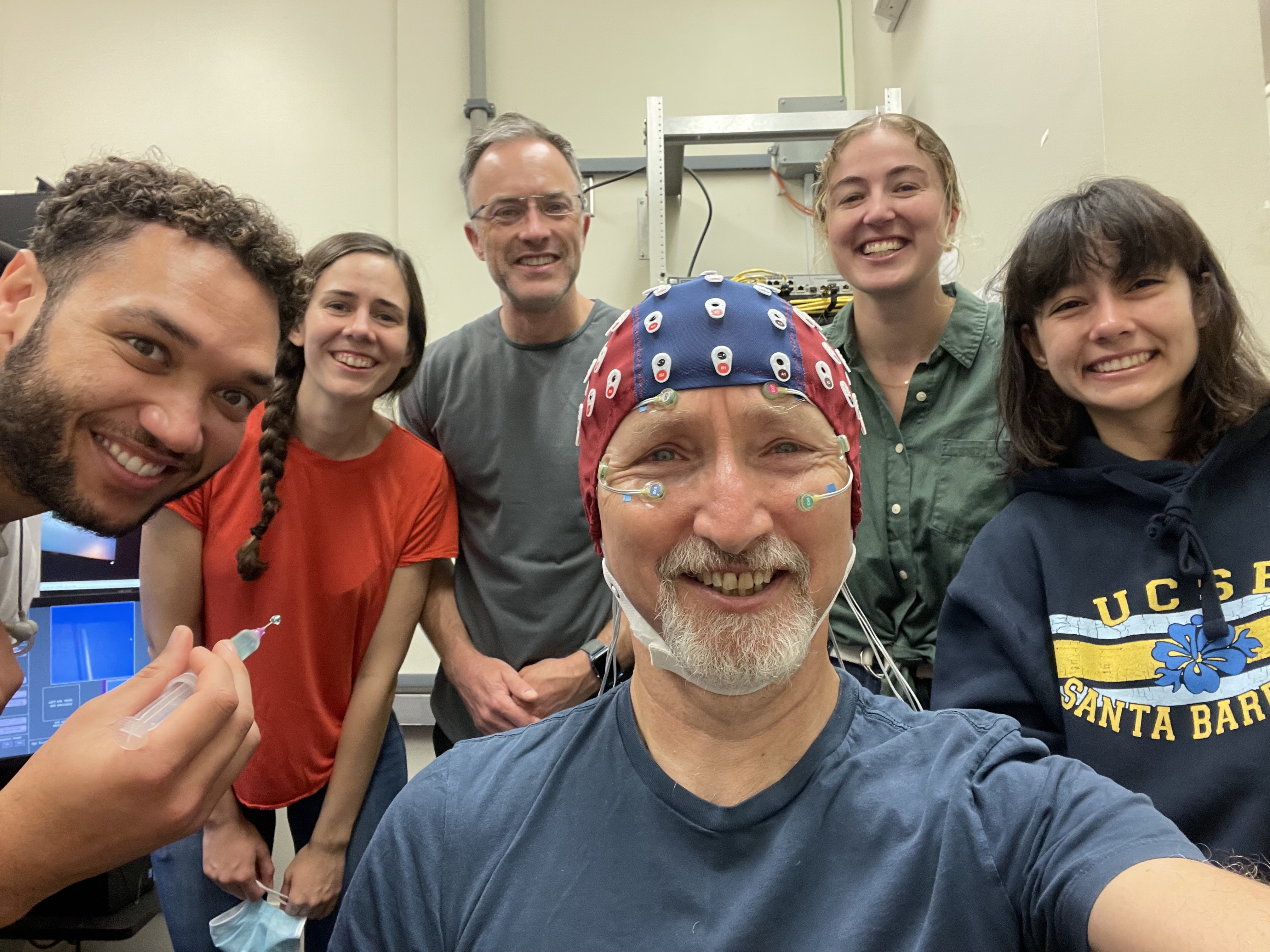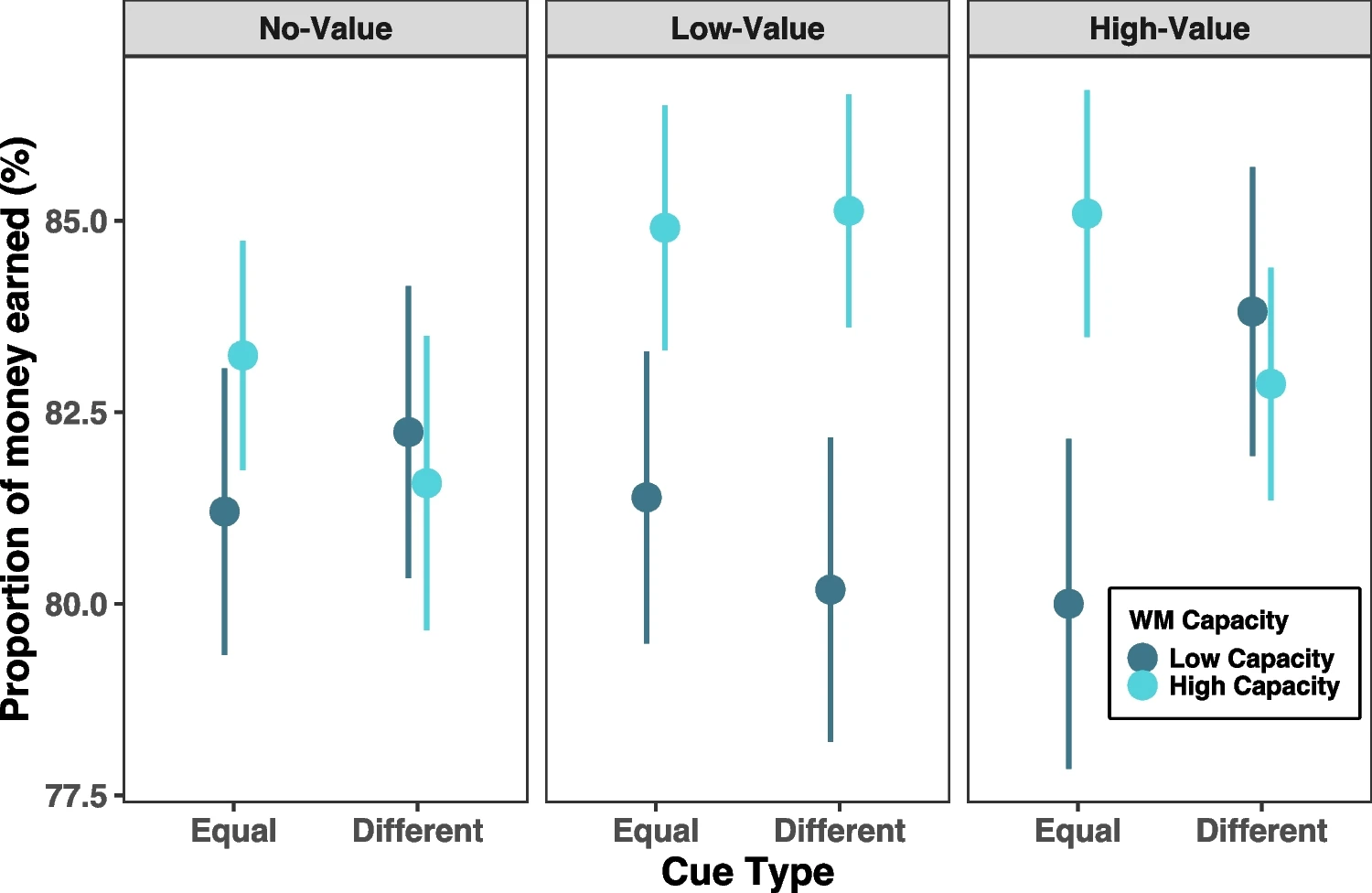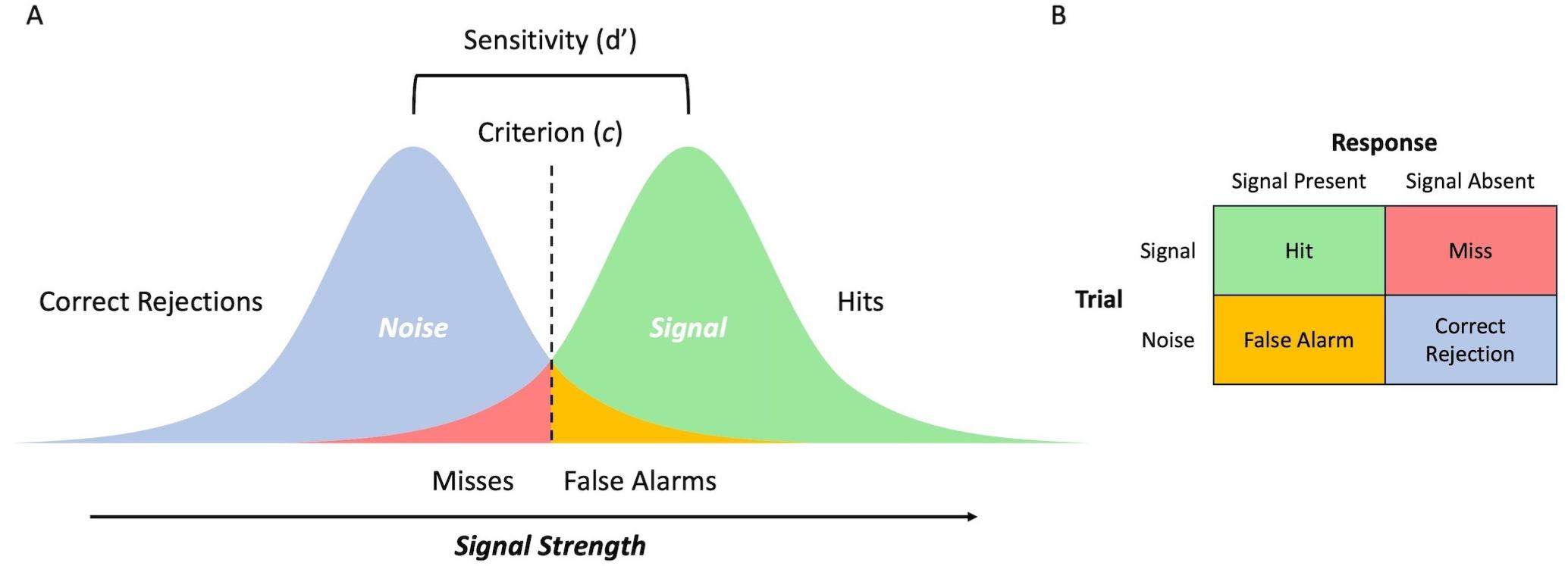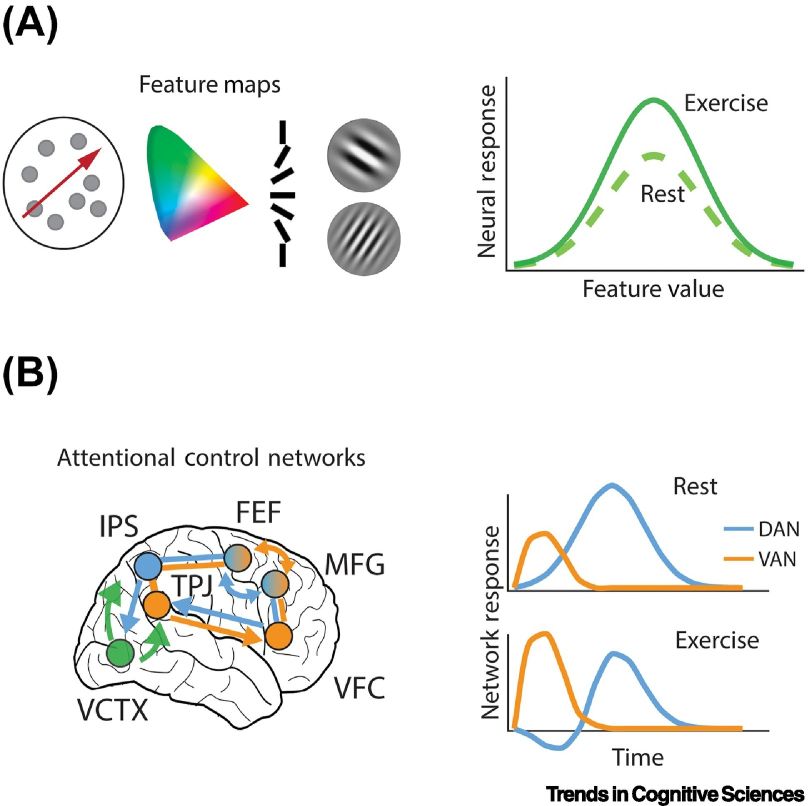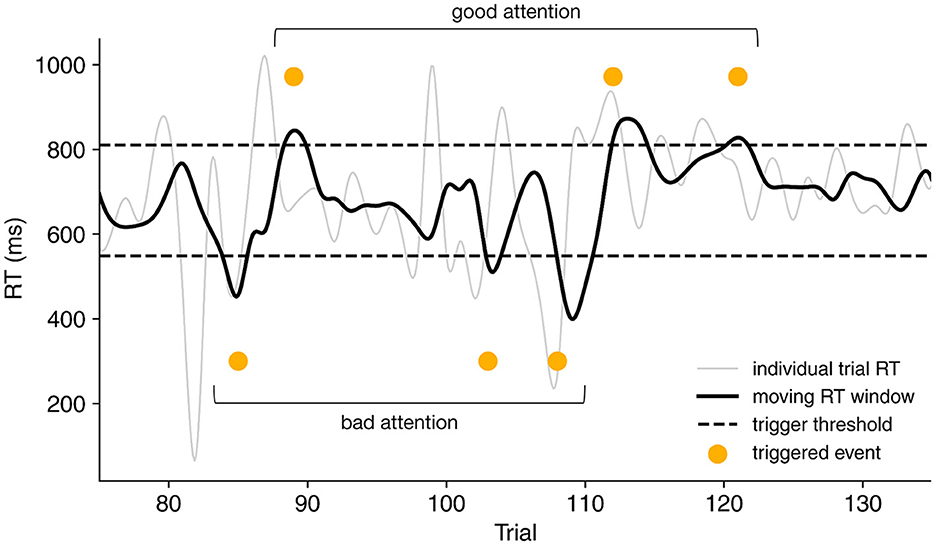Welcome to the UCSB Attention Lab
Embracing scientific curiosity, courage, and community.
PI: Barry Giesbrecht
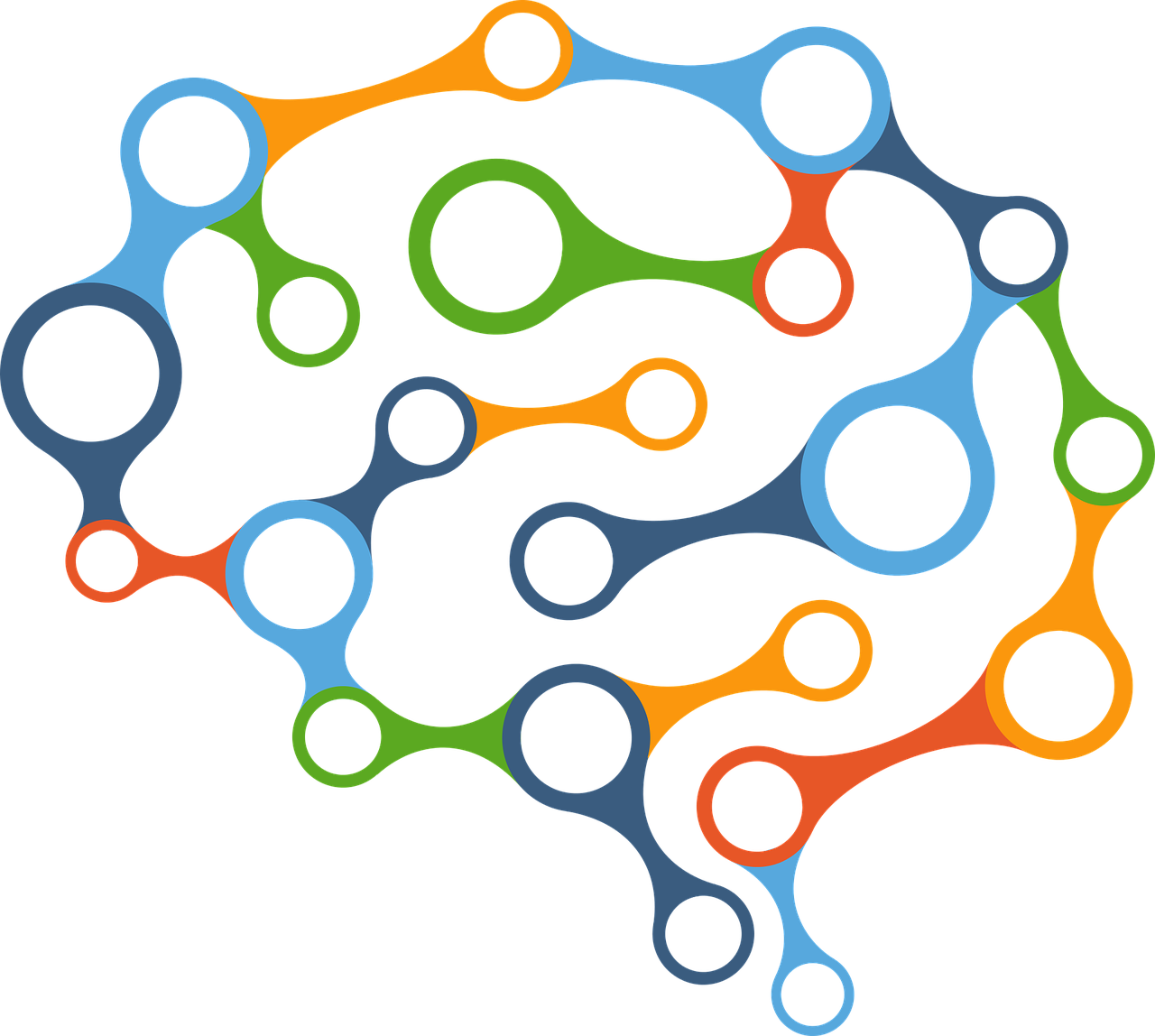
Attention is a core cognitive function that allows us to manage and prioritize processing of the sensory environment, internal thoughts, and actions. In many life-critical tasks, optimal behavior requires prioritizing, attending, encoding, and remembering relevant information. Our work is dedicated to uncovering the cognitive and neural mechanisms of the human attention system and its interaction with other cognitive functions both inside the lab and out in the real world. Learn more about our research.
Recent Publications
Task‑irrelevant abrupt onsets differentially impact value‑related orienting and maintenance (Chak et al., 2025)
Physically salient stimuli are potent influences on behavior, but their negative impacts can be reduced in the presence of explicit goal-related cues. Here, we investigated whether goal-related cues associated with value are capable of insulating information from task-irrelevant abrupt onsets during two stages of information processing. Abrupt onsets were shown either after attention-directing cues and before a target (Experiment 1) or after a target that is to be remembered for later report (Experiment 2). The cues indicated the value associated with upcoming target locations, and they were either different in value, indicating that one was more valuable than the other, or equal in value. In both experiments, subjects were instructed to report the target that would earn them the most points (Experiment 1) or money (Experiment 2). In Experiment 1, performance suffered with equal cues, suggesting that orienting to multiple locations increases susceptibility to distraction from physically salient stimuli. In Experiment 2, the same pattern did not appear for abrupt onsets during the retention period; instead, the impact of the physically salient stimulus was dependent upon working memory capacity. The differential impact of abrupt onsets prior to (Experiment 1) and after (Experiment 2) encoding of value-related target locations suggest that physically salient task-irrelevant stimuli influence value-related information processing differently during orienting and maintenance.
Beyond Detection Rate: Understanding the Vigilance Decrement Using Signal Detection Theory (Skinner & Giesbrecht, 2025)
The vigilance decrement has been classically characterized as the decline in performance across time as individuals continuously attend to a task. Errors during these periods of degraded performance are often collectively characterized as failures of attention. Theoretically, using a single construct, such as attention, to describe impaired performance obscures what is likely a range of behaviors. Methodologically, the classic characterization of the vigilance decrement relies upon declines in detection rate, a binary measure that is unable to characterize performance beyond a single dimension. This is a critical issue for the study of vigilance because detection rate can be impacted both by changes in sensitivity and response criterion. Commonly used tasks do not allow for the reliable computation of these metrics because they elicit a low number of false alarms or because they introduce confounding response demands. To address these shortcomings, we propose the use of a paradigm amenable to the application of the signal detection framework, which permits the reliable and isolated investigation of the vigilance decrement across multiple measures.
Physically activated modes of attentional control (Giesbrecht et al., 2025)
As we navigate through the day, our attentional control processes are constantly challenged by changing sensory information, goals, expectations, and motivations. At the same time, our bodies and brains are impacted by changes in global physiological state that can influence attentional processes. Based on converging lines of evidence from brain recordings in physically active humans and nonhumans, we propose a new framework incorporating at least two physically activated modes of attentional control in humans: altered gain control and differential neuromodulation of control networks. We discuss the implications of this framework for understanding a broader range of states and cognitive functions studied both in the laboratory and in the wild.
Predicting attentional lapses using response time speed in continuous performance tasks (Shelat et al., 2024)
Failures of sustained attention, including lapses and mind-wandering, have serious consequences on cognitive task performance. In recent years, real-time triggering methods have been used to isolate periods of optimal and suboptimal attention based on patterns of response times in monotonous continuous performance tasks. In a closed-loop fashion, these triggering designs reduce the need for retrospective processing to identify periods of poor attention by using simple intrasubject response time boundaries to trigger events based on inferred attentional state. In the current review, we first discuss studies that used principal component analysis to identify response patterns that precede both task errors and phenomenological reports of mind-wandering. Then, we review designs that used real-time triggering conditions to reinforce the relationship between lapsing and memory encoding. Finally, we describe important next steps to generalize the utility of the triggering procedure across populations, validate lapse countermeasures, and shine light on the limited human capacity to maintain vigilance.
Join Us
Our lab offers the opportunity to learn how to conduct behavioral and cognitive neuroscience experiments in a supportive environment. One of our top priorities is to mentor and assist all students and lab members so that each person reaches their full scientific development potential.
Learn more about how to get involved.
